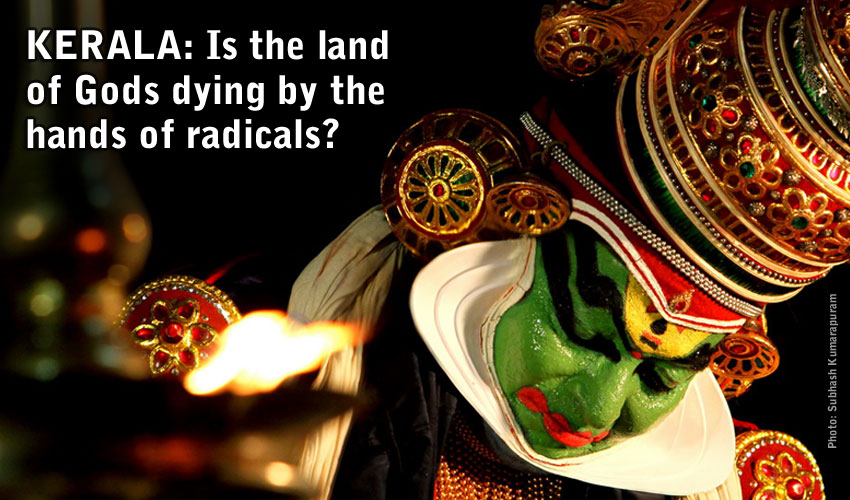The enticing advertisements by the Department of Tourism by the administration of the Indian state of Kerala entice visitors with seductive images of natural beauty in the tropics, capping it all with the slogan “God’s Own Country”. However it is becoming increasingly apparent that this begs the question, exactly whose ‘god’ does this refer to? Which kind of ‘god’ now dominates this south Indian state?
Kerala has a rich history as one of the most diverse parts of India. It is a major tourist destination where people go for the relaxing tropical climate and lush scenery. This timeless image belies the fact that it was in this part of India that major strides were made in scientific knowledge. In the fifteenth century Indian mathematicians in this part of the subcontinent were responsible for landmark theorems in developing series expansions for trigonometry. This remarkable work was completed a full two centuries before the invention of calculus in Europe and is now considered to be the first example of what in maths is known as power series.
Hailed as a haven of tolerance it was here that the ancient community variously known as Nasrani, Saint Thomas Christians, but mostly as Syrian Christians thrived long after its mother church was suppressed in its once thriving heartland of Syria and Iran . Before being offered free passage to Israel in the 1950s, there was also a thriving Jewish community. Accorded rights and privileges, Jews dominated not only trade but were also heavily present in the military. India has the little known distinction of being the only country where Jews flourished free from anti-Semitism and it was in Kerala which can specifically boast of a king of Cochin who in 1550 went further than any other sovereign ruling a Jewish minority. Nathan Katz in his book ‘The Jews of India’:
“Probably India is the only country on earth so civilised that in war, out of deference to its esteemed Jewish soldiers, no battles were fought on the Sabbath.”
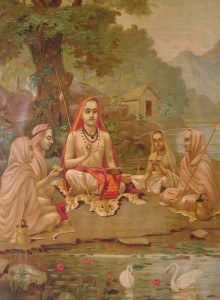 The state also boasts perhaps the earliest Muslim community in India, as the Moplahs or Mappilahs date back to the seventh century, tracing their descent to Arab traders settled along the Malabar coast .It was around this time that one of India’s foremost spiritual figures Adi Shankara was born, in the village of Kaladi in Kerala. He was barely a teenager he attracted many disciples and wrote commentaries on the Brahmasutras, Upanishads and Bhagavad Gita which were later compiled into the Bhashyas, writings which stand at the very pinnacle of Indian philosophical writing. Shankara is perhaps best known for engaging other schools of philosophy in debate. In this it was said that no other teacher could match him. Travelling throughout India he established ashrams and mathas (spiritual centres or monastaries) as he engaged in debate with other spiritual masters. This included reaching as far as Kashmir. Here at the temple dedicated to Saraswati (goddess of learning) he won the debate with all other scholars, a feat until then never achieved by a philosopher from southern India. At the age of thirty-two this most respected son of Kerala retired to the cave of Kedarnath in the Himalayas where he is said to have achieved samadhi (complete absorption of the individual consciousness in the self at the time of death).
The state also boasts perhaps the earliest Muslim community in India, as the Moplahs or Mappilahs date back to the seventh century, tracing their descent to Arab traders settled along the Malabar coast .It was around this time that one of India’s foremost spiritual figures Adi Shankara was born, in the village of Kaladi in Kerala. He was barely a teenager he attracted many disciples and wrote commentaries on the Brahmasutras, Upanishads and Bhagavad Gita which were later compiled into the Bhashyas, writings which stand at the very pinnacle of Indian philosophical writing. Shankara is perhaps best known for engaging other schools of philosophy in debate. In this it was said that no other teacher could match him. Travelling throughout India he established ashrams and mathas (spiritual centres or monastaries) as he engaged in debate with other spiritual masters. This included reaching as far as Kashmir. Here at the temple dedicated to Saraswati (goddess of learning) he won the debate with all other scholars, a feat until then never achieved by a philosopher from southern India. At the age of thirty-two this most respected son of Kerala retired to the cave of Kedarnath in the Himalayas where he is said to have achieved samadhi (complete absorption of the individual consciousness in the self at the time of death).The land itself is said to have been created when Parasurama, the eighth avatara (earthly manifestation) of Vishnu, threw his axe into the sea and Kerala thus emerged. Parasurama is also credited with crafting all martial arts, notably Kalaripayattu. Originating from at least 3000 years ago, this is the ancient martial art of Kerala and the mother of all martial arts and is based upon the principle of “a sound mind in a sound body”.
The traditional training of Kalarippayattu is always done inside a specially constructed practice area. Kalaris are the schools where training in this martial art form is imparted by Gurukals or masters. The Gurukkal system consists of rigorous physical training besides training in self-discipline. The weapons used are the sword, Dagger, Shield, short sticks, spears while the co-ordination of the body and mind is given maximum importance in this art. It is from Kerala that Bodhidharma is remembered as both a kalari master and as the “father of Han-Chinese Shaolin Fist”. The Yi Jin Jing also credits Shaolin kung-fu to Bodhidharma. Malays believe that Bodhidharma introduced preset forms into silat which would of course make him an important influence on Asian martial arts in general. Kalaripayattu is used for self-expression in dance forms, in theatre and in cinema and as such has also greatly influenced the evolution of Kerala’s theatre and dance forms, most prominently Kathakali and Theyyam. The former has attracted a compelling global audience.
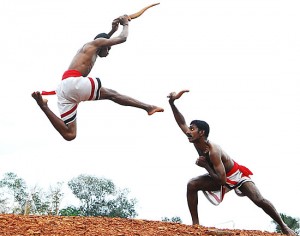 In addition to its much vaunted communal harmony the state has also boasted the highest literacy rate in modern India, the highest life expectancy which in fact is in line with developed countries, and has made determined efforts to tackle poverty. While the latter has been successful much of it is due to remittances sent back by expat workers in the Gulf. These amount to the highest amount of remittances in any Indian state. Hence while the state’s economic development has been lauded, few have commented on the distortions caused by the latter factor. The very fact that Malayalis feel the need to work in places like Dubai where they are treated as virtual slaves should make us question just how successful Kerala has actually been.
In addition to its much vaunted communal harmony the state has also boasted the highest literacy rate in modern India, the highest life expectancy which in fact is in line with developed countries, and has made determined efforts to tackle poverty. While the latter has been successful much of it is due to remittances sent back by expat workers in the Gulf. These amount to the highest amount of remittances in any Indian state. Hence while the state’s economic development has been lauded, few have commented on the distortions caused by the latter factor. The very fact that Malayalis feel the need to work in places like Dubai where they are treated as virtual slaves should make us question just how successful Kerala has actually been.Politics has been dominated by the Communist Party dominated Left Democratic Front and the Congress dominated United Democratic Front, with the former being more powerful. Indeed the state’s prosperity is often claimed to be the work of far-sighted communists – a contradiction in terms if ever there was one. In 2008 there were 32 million people in Kerala while two and a half million workers in the Gulf originated in that state. This meant that one in six employed people of the Kerala, a state where unemployment stands at twenty percent. Families of expats enjoy a higher standard of material wealth with better consumer goods.
As well as questioning the supposed success story of Kerala and its attribution to a series of communist governments, recent events cast doubt on whether the south Indian state is such a haven of communal harmony as it is often touted. The flow of money from the Gulf was often the result of work Muslim expats from Kerala, especially in Malappuram district, an area specifically carved out by the Communist government headed by E.M.S Namboothiripad to have a Muslim-majority area as a captive vote bank. In 2006 Hindus were reportedly being marginalised and discriminated against by an Islamicised administration. With increasing amounts of rape, economic blackmail, kidnapping and forcible conversion, Hindus were reportedly leaving the district.
 The destruction of Babri Masjid in 1992 had repercussions in the state as elsewhere in India, even if they were more muted. In December 2001 communal clashes broke out when the extremist Muslim National Democratic Front demanded that the Babri Masjid be rebuilt. On 2 May 2003, 8 Hindu fishermen were killed by a Muslim mob in Kozhikode district on Marad beach. A judicial commission concluded that the Indian Union Muslim League was directly involved in what became known as the Marad massacre. Also in 2008, four youths who were shot dead by the security forces in Jammu and Kashmir as part of a team of militants trying to cross over to Pakistan were found to be from Kerala. The Communist Party, as is common with the rest of India, had courted Muslim support by playing to fears of Hindu ‘fascism’ and ‘communalism’. Yet by 7 August 2010 it was the communist state chief minister, V.S. Achuthanandan, who warned that Muslims were trying to turn Kerala into an Islamic state using demographic arsenals of financial inducements to convert and deliberately marrying non-Muslim women. Despite the fact that Achuthanandan emphatically stated that he was referring to Islamic extremists and not the Muslim population in general, his break with stifling political correctness nevertheless led to him being accused of employing the incendiary language of ‘Hindutva’.
The destruction of Babri Masjid in 1992 had repercussions in the state as elsewhere in India, even if they were more muted. In December 2001 communal clashes broke out when the extremist Muslim National Democratic Front demanded that the Babri Masjid be rebuilt. On 2 May 2003, 8 Hindu fishermen were killed by a Muslim mob in Kozhikode district on Marad beach. A judicial commission concluded that the Indian Union Muslim League was directly involved in what became known as the Marad massacre. Also in 2008, four youths who were shot dead by the security forces in Jammu and Kashmir as part of a team of militants trying to cross over to Pakistan were found to be from Kerala. The Communist Party, as is common with the rest of India, had courted Muslim support by playing to fears of Hindu ‘fascism’ and ‘communalism’. Yet by 7 August 2010 it was the communist state chief minister, V.S. Achuthanandan, who warned that Muslims were trying to turn Kerala into an Islamic state using demographic arsenals of financial inducements to convert and deliberately marrying non-Muslim women. Despite the fact that Achuthanandan emphatically stated that he was referring to Islamic extremists and not the Muslim population in general, his break with stifling political correctness nevertheless led to him being accused of employing the incendiary language of ‘Hindutva’.His concerns were highlighted by the rise of the Popular Front of India, founded in 2006. This menacing new Islamist body is centred in Kozhikode and the police claim it has links to al-Qaeda. It was formed from 3 groups including the National Development Front of Kerala, which was involved in the Marad massacre. Based on paramilitary Nazi-style uniformed cadres, the PFI leader Nasrudheen Elamaram says his organisation is expanding because there is a feeling among Muslims, Dalits and Adivasis that they have been cheated. But much of the Islamicisation is due to returnees from the Gulf bringing back not just money but the puritanical and intolerant ideas of Wahhbism and Salafism – just as happened in places such as Egypt.
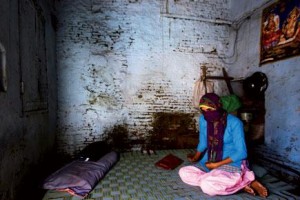 The dress style of Malayali Muslims, once almost indistinguishable from their Hindu neighbours, has now become more pronounced with Arab-style hijabs and purdah. Poverty cannot be the cause of this as even educated Muslim women are now taking to this Salafi style Islamic attire. The PFI’s media arm, he Inter Media Private Limited, held by the Thejas Publishing Charitable Trus, has been very active in publishing hardcore Islamist propaganda in Kerala’s very own Malayalam, as well as Tamil, Kannada, English, Hindi and Urdu. Support has been attracted through its organisational capability, notably by the synchronised paramilitary parades which its cadres performed on 15 August in 2008 and 2009 across in Nuremberg-style rallies in cities across the south Indian states of Kerala, Tamil Nadu and Karnataka. Muslims in Kozhikode thronged the roads and packed into the city stadium to watch the march. In 2008 it chose the Hindu stronghold of Mangalore to stage the provocative display. In 2010 the rallies were banned by the Kerala government.
The dress style of Malayali Muslims, once almost indistinguishable from their Hindu neighbours, has now become more pronounced with Arab-style hijabs and purdah. Poverty cannot be the cause of this as even educated Muslim women are now taking to this Salafi style Islamic attire. The PFI’s media arm, he Inter Media Private Limited, held by the Thejas Publishing Charitable Trus, has been very active in publishing hardcore Islamist propaganda in Kerala’s very own Malayalam, as well as Tamil, Kannada, English, Hindi and Urdu. Support has been attracted through its organisational capability, notably by the synchronised paramilitary parades which its cadres performed on 15 August in 2008 and 2009 across in Nuremberg-style rallies in cities across the south Indian states of Kerala, Tamil Nadu and Karnataka. Muslims in Kozhikode thronged the roads and packed into the city stadium to watch the march. In 2008 it chose the Hindu stronghold of Mangalore to stage the provocative display. In 2010 the rallies were banned by the Kerala government.Tapping into Muslim anger, it is not only on its image of strength and iron discipline (in the wake of perceived powerlessness among the Muslim minority following the release of the Sachar Report) that the PFI owes its success. Like the Muslim Brotherhood and similar Salafi groups the hardcore organisation has been active in social and public health initiatives, offering career counselling, distributing educational aids and study material, and running motivational programmes like the ‘School Chalo’ campaign every summer. Its medical camps are also popular. But by far the biggest inducement for Muslim youth to join the PFI is jobs. “We have been fairly successful in building an organisation. There was a change because employment was given to Muslim girls, boys and Dalits,” says Elamaram.
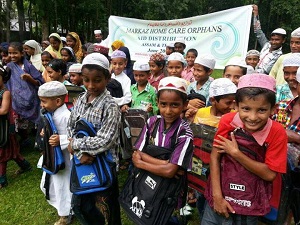 The police however claim that the PFI goes beyond providing jobs. “All Muslim youth joining the PFI are given mobile phones, motorcycles and money. The organisation also assists in job recruitments in the Gulf,” says Vinson M Paul, ADGP, Crime. The PFI claims Muslims are powerless against the Hindu majority, citing violence following the destruction of Babri Masjid and in 2002 in Godhra where Muslims were massacred in Gujarat . Since 2008 the PFI and its political wing, Social Democratic Party of India, have set up committees in 15 states and already have a significant following in Kerala, Tamil Nadu and Karnataka. The PFI’s formulations of “total empowerment” for Muslims, Dalits, Adivasis and Backward Castes and connect it with other parties. The Asom United Democratic Front (AUDF), led by perfume magnate Maulana Badruddin Ajmal and with significant power in Assam politics, has declared solidarity with the PFI. Smaller outfits such as the Milli Ettehad Parishad in West Bengal and the Tamil Nadu Muslim Munnetra Kazhgam (TMMK) have joined the PFI-led national alliance of Muslim groups and parties.
The police however claim that the PFI goes beyond providing jobs. “All Muslim youth joining the PFI are given mobile phones, motorcycles and money. The organisation also assists in job recruitments in the Gulf,” says Vinson M Paul, ADGP, Crime. The PFI claims Muslims are powerless against the Hindu majority, citing violence following the destruction of Babri Masjid and in 2002 in Godhra where Muslims were massacred in Gujarat . Since 2008 the PFI and its political wing, Social Democratic Party of India, have set up committees in 15 states and already have a significant following in Kerala, Tamil Nadu and Karnataka. The PFI’s formulations of “total empowerment” for Muslims, Dalits, Adivasis and Backward Castes and connect it with other parties. The Asom United Democratic Front (AUDF), led by perfume magnate Maulana Badruddin Ajmal and with significant power in Assam politics, has declared solidarity with the PFI. Smaller outfits such as the Milli Ettehad Parishad in West Bengal and the Tamil Nadu Muslim Munnetra Kazhgam (TMMK) have joined the PFI-led national alliance of Muslim groups and parties.Much of this axis was the result of the Kozhikode conference where Ebrahim Rasool, then advisor to the South African president, energised the PFI leadership with:
“Muslims in South Africa account for 3 percent of its population, but have 15 percent representation in Parliament. If we can do it, why can’t the 13 percent Muslims in India do the same thing?”
Many PFI leaders were once part of the Students Islamic Movement of India. Banned in 2001 for its terrorism and fanning hatred, the links are still retained with SIMI which in 2003 was accused of train bombings in Mumbai. The PFI has established many Arivagam centres to help mass conversion to Islam with the support of influential ulemas. Funding is helped notjust by expat remittances but by the World Assembly of Muslim Youth (WAMY) and the Muslim World League (MWL) or Rabitha, which enjoy the personal patronage of Saudi Arabia ’s royal family. The effects are now evident. On 31 August 2007 an attempt was made to burn down the centuries old Tali Mahadeva Temple at Angadipuram, in Malappuram district. On 11 February 2012 a Hindu in Meepuguri of Kasaragod was defiled by having a buffalo head skull left outside. Kerala’s very own street jihad includes copying the official Saudi vice police. In January 2012 a Hindu youth was brutally attacked and beaten up by so called newly formed ‘Kerala Religious Police” for talking to a Muslim girl. But the Muslim community is also suffering from the puritanical standards are being enforced. Muslim politicians from Kerala, like Minister of State for Railways E. Ahmed and PV Wahab have been pushing the agenda of Islamic banking helped by WAMY’s representative Abdul Rahman and the MWL advisor Khalaf Bin Sulaiman Namary.
A Muslim co-ed school in Kannur that took boys and girls out on a normal school excursion was attacked in 2010 and their bus was blocked because the NDF prohibited the mixing of the sexes. Or in Malapurram they tell Muslim owners of restaurants that they cannot open during Ramadan where decades ago in the same region the NDF burnt movie theatres they suspected were showing pornographic films. In 2010 Muslim engineering student Rayana Khasi was afforded police protection following threats by the storm-troopers of the PFI just for wearing jeans. The radicalisation of Muslim youth in Kerala has led Achuthanandan to warn that his state will have a Muslim majority in two decades.
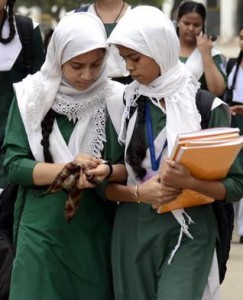 Now this talk has often been dismissed as Hindu extremism, anti-Muslim hatred and a problem of ‘communalism’ that ambiguous term to describe sectarian violence between Hindus and Muslims in India, but which has the rather unambiguous anti-Hindu undercurrent in its usage. But then how to explain the brutal assault on T. J. Joseph which occurred on Sunday, July 4 2010, as the professor and his family were leaving a church service? Can this be laid at the door of centuries of Hindu-Muslim animosity? Kerala is a state that has had a strong Christian presence for over two thousand years. They have mostly lived in amity.
Now this talk has often been dismissed as Hindu extremism, anti-Muslim hatred and a problem of ‘communalism’ that ambiguous term to describe sectarian violence between Hindus and Muslims in India, but which has the rather unambiguous anti-Hindu undercurrent in its usage. But then how to explain the brutal assault on T. J. Joseph which occurred on Sunday, July 4 2010, as the professor and his family were leaving a church service? Can this be laid at the door of centuries of Hindu-Muslim animosity? Kerala is a state that has had a strong Christian presence for over two thousand years. They have mostly lived in amity.That coexistence has now been brutally shattered. Professor Joseph had previously been suspended from his teaching post at Newman’s College and forced to make a public apology after giving students a test in which one question referred to a fictional character named Mohammed. This was taken by some Muslim students as a deliberate attack on their faith and especially their holiest of prophets. It led to the professor being bungled into a van and having his arm amputated by assailants of the PFI. Joseph denied he was in any way maligning Islam. Denying his involvement in the attack the PFI youth counsellor ‘Anas’ nevertheless justified it saying that when Islam is insulted the youth cannot always control their feelings on the matter. P Koya of the PFI national executive blamed “rogue elements” and defended the PFI as a necessary bulwark against attacks on Muslims by Hindus. Not only does this ignore the fact that Joseph is not even a Hindu but we should take his words with even more caution when it is realised that Koya was a founding member of the terrorist group SIMI. Elamaram made a similar defence of the attack.
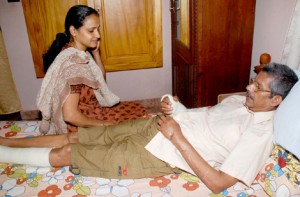 Also after Joseph was attacked, police raided the Popular Front’s offices and found literature and videos about Taliban-style executions and the severing of limbs as punishment for crimes. The Internal Security Investigation Team (ISIT) of the Kerala Police also found CD’s linked to al-Qaeda and links to Lashkar-e-Tayyeba. This should come as no surprise considering that the PFI has openly expressed its “solidarity to the freedom fighters in Palestine, Afghanistan and Iraq ” and declares that Hamas, Taliban and al-Qaeda are part of its liberation struggle.
Also after Joseph was attacked, police raided the Popular Front’s offices and found literature and videos about Taliban-style executions and the severing of limbs as punishment for crimes. The Internal Security Investigation Team (ISIT) of the Kerala Police also found CD’s linked to al-Qaeda and links to Lashkar-e-Tayyeba. This should come as no surprise considering that the PFI has openly expressed its “solidarity to the freedom fighters in Palestine, Afghanistan and Iraq ” and declares that Hamas, Taliban and al-Qaeda are part of its liberation struggle.At its first political conference in 2009 in Kozhikode, where it came out with its influential Kozhikode Declaration, the PFI said that The War on Terror is a US agenda shaped by hegemonic forces bent upon world domination in which Muslims are the victims. Because the Indian government supports the America’s wars and makes available the county’s machinery for implementing the plan hatched by the US-Israel axis it is this which has led to increasing bomb blasts across the country. In 2011 a booklet entitled ‘Kerala’s Radical Turn’ by India Foundation in New Delhi highlighted the similarities between the state and terrorist insurgency in Kashmir:
“Many of the international jihad mongers regularly visit Kerala, especially Kozhikkode and Malappuram. The speeches made are highly anti-national, communal and vituperative. The world (in)famous terror cleric Yusuf-ul-Qaradawi tops among the foreign speakers. This man openly supports separatists in J&K by calling them Freedom Fighters. The book, Qaradawi’s Fatwas in two volumes was published by Islamic Publishing House in Malayalam. Another book, Al Iqwanul Muslimoon (meaning Muslim Brotherhood) in Malayalam is running the second edition now. It declares in unequivocal language “…Jihad is our path. Death in the path to Allah is our greatest wish.” This, briefly, is the ideological mindset being nurtured and nourished in the brains of the present day Muslim youth of Kerala”.
So long gone are the days when smug politically correct western commentators could dismiss all anti-Hindu violence as India as Hindu-Muslim clashes, sectarian violence or the fault of Hindu ‘communalism’. The incipient insurgency has all the global dimensions of international conflict that burst with unprecedented fury onto the west with 9/11 and 7/7. In relation to the Saudi sponsors of the PFI, it is worth noting that that American and European governments have severely curtailed the activities of both WAMY and MWL on grounds of “terror financing”. But the lessons for the west should go much further. Qaradawi has of course risen to prominence in his native Egypt since the overthrow of Mubarak and the victory in elections by Salafist forces of al-Nour and the Ikhwan or Muslim Brotherhood.
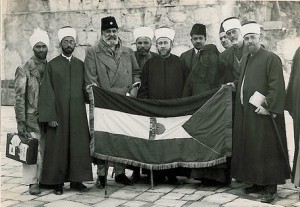 President Obama invited the latter group to his speech in Cairo in June 2009 as he extended a hand of friendship to the Muslim world. Now with the outfit’s electoral victory as the ironically named Freedom and Justice Party, the Obama administration continues to court the favour of these extremists. It was the Indian national newspaper ‘The Hindu’ which broke the startling news in December 2011 that Obama had asked the Ikhwan’s leading jurist, Qaradawi, to mediate secret talks between the United States and the Taliban. This is the same man who in 2009 called for the extermination of all Jews and issued a fatwa asserting that “the Kashmiris were properly fighting jihad against the Indian army” in a legitimate war because mujahideen groups sought to create an Islamic state. The fatwa was therefore incumbent on all Muslims to help Kashmiris gain their “freedom from Indian aggression.” The jurist previously has called for killing American soldiers in Iraq and has vowed that Islam “will conquer Europe [and] will conquer America ,” whether by force or by the spread of radical Islam. It is this last element which is either ignored or laughed off by western commentators. But the terrorist organisation’s founding father, Hasan al-Banna, himself cited i’adat al Khalifa al Mafqudah as the chief political goal of the Muslim Brotherhood, right from its founding in 1928. This meant the immediate restoration of the caliphate abolished that year by Mustafa Kemal Ataturk in his attempts to turn the new republic of Turkey into a secular, western and European direction, thus cutting it off from its Ottoman and Islamic roots and thus deposing and exiling the last sultan. In Arabic the caliphate is known as ‘Khilafat’, a word which though rarely used in discussing the Saalfist hijacking of the Arab Spring, should cause us intense alarm because the Khilafat was also the name of an Islamic movement in India from 1918 to 1923.
President Obama invited the latter group to his speech in Cairo in June 2009 as he extended a hand of friendship to the Muslim world. Now with the outfit’s electoral victory as the ironically named Freedom and Justice Party, the Obama administration continues to court the favour of these extremists. It was the Indian national newspaper ‘The Hindu’ which broke the startling news in December 2011 that Obama had asked the Ikhwan’s leading jurist, Qaradawi, to mediate secret talks between the United States and the Taliban. This is the same man who in 2009 called for the extermination of all Jews and issued a fatwa asserting that “the Kashmiris were properly fighting jihad against the Indian army” in a legitimate war because mujahideen groups sought to create an Islamic state. The fatwa was therefore incumbent on all Muslims to help Kashmiris gain their “freedom from Indian aggression.” The jurist previously has called for killing American soldiers in Iraq and has vowed that Islam “will conquer Europe [and] will conquer America ,” whether by force or by the spread of radical Islam. It is this last element which is either ignored or laughed off by western commentators. But the terrorist organisation’s founding father, Hasan al-Banna, himself cited i’adat al Khalifa al Mafqudah as the chief political goal of the Muslim Brotherhood, right from its founding in 1928. This meant the immediate restoration of the caliphate abolished that year by Mustafa Kemal Ataturk in his attempts to turn the new republic of Turkey into a secular, western and European direction, thus cutting it off from its Ottoman and Islamic roots and thus deposing and exiling the last sultan. In Arabic the caliphate is known as ‘Khilafat’, a word which though rarely used in discussing the Saalfist hijacking of the Arab Spring, should cause us intense alarm because the Khilafat was also the name of an Islamic movement in India from 1918 to 1923.The Khilafat movement was led by Oxford educated journalist Mohammed Ali Jouhar in a bid to secure good treatment for the Sultan Abdelmecid of the Ottoman Empire which had been defeated in 1918 by the British victors of the First World War. India ’s Muslims were encouraged to rally around and ensure dignity and protection for their caliph in Istanbul, and as such the All India Khilafat Committee was formed to pressure the British Raj.
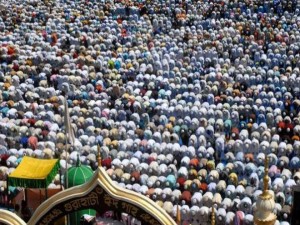 It was at this juncture that India’s freedom movement made a fateful mistake. Like Obama’s well-meaning yet naïve calls for reaching out to the Muslim world, the Indian National Congress hoped to create amity among all Indians by demonstrating to their colonial rulers that Muslims were as much a part of the freedom struggle as the majority Hindus.
It was at this juncture that India’s freedom movement made a fateful mistake. Like Obama’s well-meaning yet naïve calls for reaching out to the Muslim world, the Indian National Congress hoped to create amity among all Indians by demonstrating to their colonial rulers that Muslims were as much a part of the freedom struggle as the majority Hindus.In reaching out to the Khilafat movement, Mahatma Gandhi played a major part. Gandhi described his feelings towards Mohammad Ali as “love at first sight” to underscore his feelings of solidarity. Khilafat leaders such as Dr. Ansari, Maulana Azad and Hakim Ajmal Khan also grew personally close to Gandhi. Swaraj (self-rule for India) and the Khilafat were held to be inseparable twin goals. Hindus and Muslims jointly offered non-violent civil disobedience while Gandhi and the Ali brothers, Mohammaed and Shaukat, both suffered imprisonment at the hands of the British. However when Gandhi suspended civil disobedience following the killing of 23 policemen at Chauri Chaura in 1922, the Ali brothers became disillusioned with him.
But the final blow came when Kemal himself abolished the caliphate in his bid to establish Turkey as a modern secular republic. The Ali brothers joined the Muslim League and Mohammed in particular is regarded as a separatist ideologue leading to what became Pakistan . Once a prominent supporter of Gandhi he now showed his true colours. In his little know book ‘ Pakistan or the Partition of India’ from 1946, Dr. Babasaheb Ambedkar elucidates what happened. In 1924 Mohammed Ali said at Aligarh:
“However pure Mr. Gandhi’s character may be, he must appear to me from the point of view of religion inferior to any Musalman, even though he be without character.”
He reiterated this view of Gandhi at meeting held in Lucknow’s Aminabad Park:
“Yes, according to my religion and creed, I do hold an adulterous and a fallen Musalman to be better than Mr. Gandhi.”
Yet only a year earlier, presiding over the session of the Indian National Congress he had praised Gandhi, even to the extent of comparing his character and sufferings to those of Jesus. So can one accuse Ambedkar of being a Hindu extremist? After all this was the man who had suffered appalling treatment and discrimination because of his birth into one of the so-called ‘untouchable’ castes, known as Mahars. In 1956 he led thousands of followers in a mass conversion to Buddhism against the injustices of the caste system. To this day his name is honoured as the man who uplifted the Dalits from their degraded status as people who should be accorded equal respect as other Hindus. If anything we would expect him to have had scant sympathy for Gandhi.
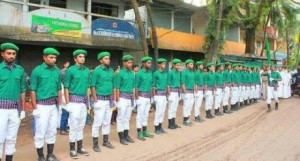 In his 1998 book ‘The World of Fatwas’, Rajya Sabha member Arun Shourie begins by describing the fallout from the Khilafat movement. Gandhi was adamant of full unconditional support of the Khilafat movement and even boasted that “Shaukat has me in his pocket”. As late as January 1924 with Gandhi suffering ill health in Yeravda Jail, the Ali brothers kissed his feet as a mark of respect and tears flowed down Mohammed Ali’s face. It took a pogrom against minority Hindus and Sikhs (usually referred to in non-judgmental politically correct terms even then as ‘communal riot’) in the North-West Frontier Province of Kohat in September for this façade to finally break. While admitting that Gandhi had a higher moral character than even his spiritual guide Maulana Abdul Bari, Maulana Mohammed Ali nevertheless confessed the truth behind his apparent volte-face in a letter to Swami Shraddhananda:
In his 1998 book ‘The World of Fatwas’, Rajya Sabha member Arun Shourie begins by describing the fallout from the Khilafat movement. Gandhi was adamant of full unconditional support of the Khilafat movement and even boasted that “Shaukat has me in his pocket”. As late as January 1924 with Gandhi suffering ill health in Yeravda Jail, the Ali brothers kissed his feet as a mark of respect and tears flowed down Mohammed Ali’s face. It took a pogrom against minority Hindus and Sikhs (usually referred to in non-judgmental politically correct terms even then as ‘communal riot’) in the North-West Frontier Province of Kohat in September for this façade to finally break. While admitting that Gandhi had a higher moral character than even his spiritual guide Maulana Abdul Bari, Maulana Mohammed Ali nevertheless confessed the truth behind his apparent volte-face in a letter to Swami Shraddhananda:“As a follower of Islam I am bound to regard the creed of Islam as superior to that professed by the followers of any non-Islamic religion. And in this sense the creed of even a fallen and degraded Mussalman is entitled to a higher plane than that of any other non-Muslim irrespective of his high character even though the person in question be Mahatma Gandhi himself.”
Gandhi defended this narrow-mindedness even when Mohammed Ali blamed the Hindus for the atrocities at Kohat, despite all the forcible conversions being a one-sided affair.
But in fact this dangerous cooption of the Khilafat movement had already shown its genocidal nature before the outrages in Kohat, at the other end of the country in Kerala. On 20 August 1921, the police attempted to arrest Vadakkevittil Muhammed, the secretary of the Khilafat Committee of Ernad at Pookkottur, alleging that he stolen the pistol of a Hindu Thirumulpad from a Kovilakam (manor) in Nilambur. He was from the Mappilah (Moplah) community and his arrest led to a crowd of 2,000 Mappilas from the neighbourhood halting the arrest. But on the following day the police arrested a number of Khilafat volunteers and seized records at the Mambaram mosque in Tirurangadi, leading to rumours that the building had been desecrated. However what began as an anti-British revolt soon found new targets in helpless Hindus. Ambedkar himself recounts what happens:
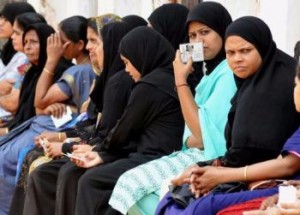 “It was the result of the agitation carried out by two Muslim organizations, the Khuddam-i-Kaba (servants of the Mecca Shrine) and the Central Khilafat Committee. Agitators actually preached the doctrine that India under British Government was Dar-ul-Harab and that the Muslims must fight against it and if they could not, they must carry out the alternative principle of Hijrat. The Moplas were suddenly carried off their feet by this agitation. The outbreak was essentially a rebellion against the British Government. The aim was to establish the kingdom of Islam by overthrowing the British Government. Knives, swords and spears were secretly manufactured, bands of desperadoes collected for an attack on British authority…..As soon as the administration had been paralysed, the Moplas declared that Swaraj had been established. A certain Ali Mudaliar was proclaimed Raja, Khilafat flags were flown, and Ernad and Wallurana were declared Khilafat Kingdoms. As a rebellion against the British Government it was quite understandable. But what baffled most was the treatment accorded by the Moplas to the Hindus of Malabar. The Hindus were visited by a dire fate at the hands of the Moplas. Massacres, forcible conversions, desecrations of temples, foul outrages upon women, such as ripping open pregnant women, pillage arson and destruction – in short all the accompaniments of brutal and unrestrained barbarism, were perpetrated freely by the Moplas upon the Hindus until such time as troops could be hurried to the task of restoring order through a difficult and extensive tract of the country. This was not a Hindu-Muslim riot. This was a Bartholomew. The number of Hindus who were killed, wounded or converted, is not known. But the number must have been enormous.”
“It was the result of the agitation carried out by two Muslim organizations, the Khuddam-i-Kaba (servants of the Mecca Shrine) and the Central Khilafat Committee. Agitators actually preached the doctrine that India under British Government was Dar-ul-Harab and that the Muslims must fight against it and if they could not, they must carry out the alternative principle of Hijrat. The Moplas were suddenly carried off their feet by this agitation. The outbreak was essentially a rebellion against the British Government. The aim was to establish the kingdom of Islam by overthrowing the British Government. Knives, swords and spears were secretly manufactured, bands of desperadoes collected for an attack on British authority…..As soon as the administration had been paralysed, the Moplas declared that Swaraj had been established. A certain Ali Mudaliar was proclaimed Raja, Khilafat flags were flown, and Ernad and Wallurana were declared Khilafat Kingdoms. As a rebellion against the British Government it was quite understandable. But what baffled most was the treatment accorded by the Moplas to the Hindus of Malabar. The Hindus were visited by a dire fate at the hands of the Moplas. Massacres, forcible conversions, desecrations of temples, foul outrages upon women, such as ripping open pregnant women, pillage arson and destruction – in short all the accompaniments of brutal and unrestrained barbarism, were perpetrated freely by the Moplas upon the Hindus until such time as troops could be hurried to the task of restoring order through a difficult and extensive tract of the country. This was not a Hindu-Muslim riot. This was a Bartholomew. The number of Hindus who were killed, wounded or converted, is not known. But the number must have been enormous.”Ambedkar further writes that the “Mopla Rebellion” received praise from Khilafat leaders and the Mapillas were congratulated on fighting bravely. Now this was at the height of Gandhi’s cooperation with the Khilafat movement. Ambedkar is hardly complimentary when he writes:
“Any person could have said that this was too heavy a price to pay for Hindu-Muslim unity. But Mr. Gandhi was so much obsessed by the necessity of establishing Hindu-Muslim unity that he was prepared to make light of the doings of the Moplas and the Khilafats who were congratulating them. He spoke of the Moplas as the “brave God-fearing Moplas who were fighting for what they consider as religion and in a manner which they consider as religious.”…The Resolution passed by the Working Committee of the Congress on the Mopla atrocities shows how careful the Congress was not to hurt the feelings of the Musalmans.”
Is Obama therefor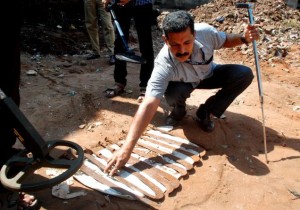 e paying too high a price for his outreach by recognising the Muslim Brotherhood as a legitimate democratic force? When western media refer to Salafist groups such as Tunisia’s Ennhad party as ‘moderate’ is this not the same intellectual dishonesty as when they term every pogrom against Hindus in India as ‘communal riot’ or the result of Hindu fascism? What is dismissed as a problem of a Third World poverty and seen through the outdated colonialist paradigm of dark-skinned heathen masses with bizarre customs will now be something which rudderless western democracies have to deal with. Misuse of terms such as ‘democratic’ and ‘moderate’ do not change the ideological DNA of such organisations whose unambiguous aim is that of the caliphate, an Islamic superpower based on the Salafi brand of Islam which if fast overtaking oil as Saudi Arabia’s main export. If such a revered figure as Gandhi could not make peace with such forces what chance do contemporary statesmen have? It was in America that Gandhi’s ideas of ahimsa (non-violence) were used with such effect half a century ago by Martin Luther King to gain full civil rights for all the country’s citizens. Now a president, who without the effort of King and others would have most likely not been able to even vote let alone become head of state, is following in Gandhi’s rather less illustrious footsteps by giving unconditional support for the vanguard of the present day Khilafat movement.
e paying too high a price for his outreach by recognising the Muslim Brotherhood as a legitimate democratic force? When western media refer to Salafist groups such as Tunisia’s Ennhad party as ‘moderate’ is this not the same intellectual dishonesty as when they term every pogrom against Hindus in India as ‘communal riot’ or the result of Hindu fascism? What is dismissed as a problem of a Third World poverty and seen through the outdated colonialist paradigm of dark-skinned heathen masses with bizarre customs will now be something which rudderless western democracies have to deal with. Misuse of terms such as ‘democratic’ and ‘moderate’ do not change the ideological DNA of such organisations whose unambiguous aim is that of the caliphate, an Islamic superpower based on the Salafi brand of Islam which if fast overtaking oil as Saudi Arabia’s main export. If such a revered figure as Gandhi could not make peace with such forces what chance do contemporary statesmen have? It was in America that Gandhi’s ideas of ahimsa (non-violence) were used with such effect half a century ago by Martin Luther King to gain full civil rights for all the country’s citizens. Now a president, who without the effort of King and others would have most likely not been able to even vote let alone become head of state, is following in Gandhi’s rather less illustrious footsteps by giving unconditional support for the vanguard of the present day Khilafat movement.
 e paying too high a price for his outreach by recognising the Muslim Brotherhood as a legitimate democratic force? When western media refer to Salafist groups such as Tunisia’s Ennhad party as ‘moderate’ is this not the same intellectual dishonesty as when they term every pogrom against Hindus in India as ‘communal riot’ or the result of Hindu fascism? What is dismissed as a problem of a Third World poverty and seen through the outdated colonialist paradigm of dark-skinned heathen masses with bizarre customs will now be something which rudderless western democracies have to deal with. Misuse of terms such as ‘democratic’ and ‘moderate’ do not change the ideological DNA of such organisations whose unambiguous aim is that of the caliphate, an Islamic superpower based on the Salafi brand of Islam which if fast overtaking oil as Saudi Arabia’s main export. If such a revered figure as Gandhi could not make peace with such forces what chance do contemporary statesmen have? It was in America that Gandhi’s ideas of ahimsa (non-violence) were used with such effect half a century ago by Martin Luther King to gain full civil rights for all the country’s citizens. Now a president, who without the effort of King and others would have most likely not been able to even vote let alone become head of state, is following in Gandhi’s rather less illustrious footsteps by giving unconditional support for the vanguard of the present day Khilafat movement.
e paying too high a price for his outreach by recognising the Muslim Brotherhood as a legitimate democratic force? When western media refer to Salafist groups such as Tunisia’s Ennhad party as ‘moderate’ is this not the same intellectual dishonesty as when they term every pogrom against Hindus in India as ‘communal riot’ or the result of Hindu fascism? What is dismissed as a problem of a Third World poverty and seen through the outdated colonialist paradigm of dark-skinned heathen masses with bizarre customs will now be something which rudderless western democracies have to deal with. Misuse of terms such as ‘democratic’ and ‘moderate’ do not change the ideological DNA of such organisations whose unambiguous aim is that of the caliphate, an Islamic superpower based on the Salafi brand of Islam which if fast overtaking oil as Saudi Arabia’s main export. If such a revered figure as Gandhi could not make peace with such forces what chance do contemporary statesmen have? It was in America that Gandhi’s ideas of ahimsa (non-violence) were used with such effect half a century ago by Martin Luther King to gain full civil rights for all the country’s citizens. Now a president, who without the effort of King and others would have most likely not been able to even vote let alone become head of state, is following in Gandhi’s rather less illustrious footsteps by giving unconditional support for the vanguard of the present day Khilafat movement.The results will be far from pretty as the western world, as much as minorities in the Middle East, Malaysia, Pakistan and Indonesia face a ‘Hindu’ future at the hands of an embryonic neo-caliphate which is nurturing its very own ‘Mopla Rebellion’. Once they have settled this issue it begs no guesses as to where they will turn their attention to next. Where will Obama’s outreach be then? If we do no look beyond bland rhetoric and meaningless platitudes at actual behaviour patterns that will not wish away the disastrous course on which the foreign policy of America and other western countries now have been set.
If they pay jizya tax disguised as foreign aid, how long before their ‘Hindu’ future means they need to deal with their very own ‘Kashmir problem’? It is for that reason that unlike the major mathematical strides of the fifteenth century, this time the events in Kerala should be known to the outside world. They are ominous signs of what lies beyond the horizon. It is therefore not just Kerala that needs to recapture the spirit of Shankara. Now more than ever his spiritual message is relevant to the whole world. Instead of Gandhian-style academic dishonesty, cultural self-immolation and ineffectual appeasement, Obama needs to lead western democracies in debating not just rival but hostile ideas head on; ideologies that, if the present trend continues, would stifle debate and lock humanity into a gothic Orwellian nightmare. The only way to break this claustrophobic nemesis is to follow in the illustrious footsteps of Shankara and debate the matter head on, honestly and openly: Kalarippayattu in a formidable intellectual format.

